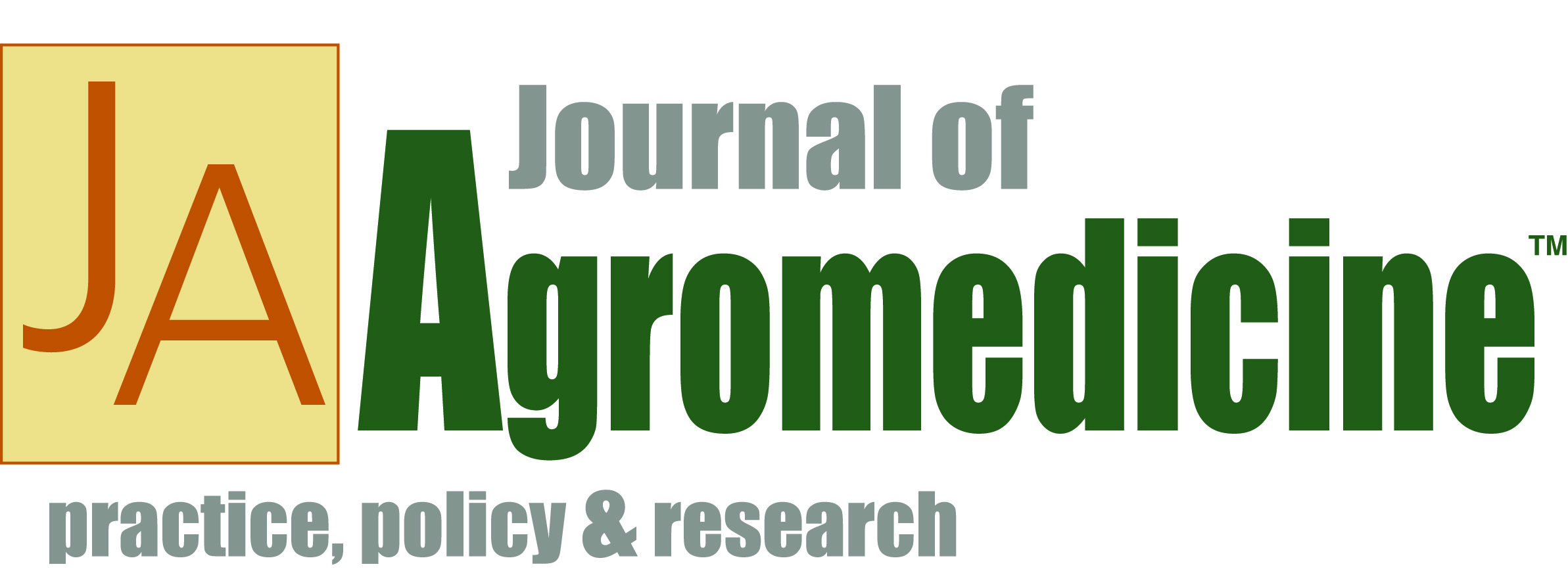Call for papers! 
Agriculture, Forestry and Fishing (AgFF)
Injury and Illness Surveillance, Special Issue
The Journal of Agromedicine seeks international original research and editorials describing injury and illness surveillance topics in the agriculture forestry and fishing industry. Papers of special interest include: a) original research on AgFF injury and/or illness surveillance; and b) case reports, editorials or brief reports describing best practices/policies/methods for AgFF surveillance, especially in the following areas1, 2:
- Setting forth a clear rationale and prioritization for surveillance including quantifying the economic and health burden of occupational illness and injury
- Coordinating surveillance strategies and operations among key agencies, organizations, and stakeholders to ensure a “system-of-systems” architecture and align strategic planning and operations
- Using information technology effectively to meet surveillance objectives
- Enhancing training and support for surveillance practitioners with appropriate skills and knowledge to conduct, analyze, and recommend worker safety improvements based on OSH surveillance
- Identifying and using consistent terminology – for comparisons between surveillance systems and other public health reporting
- Developing and evaluating new methodologies for using multiple data systems – especially examples related to documenting common variables, coding, or crosswalks
- Maximizing regional or population-specific data collection to fill gaps – some existing secondary data sources can lack critical variables, necessitating the use of purpose built data collection tools
- Exploring existing surveys and data managed by other agencies for feasibility in the agricultural, forestry or fishing sector – including examples of alternative data sources and the addition of industry and occupation variables into existing sources
- Using existing data to identify, describe, track, and evaluate risks and injuries – best practices on aggregating data and displaying surveillance data
- Promoting and facilitating the use of surveillance information for prevention efforts – could include examples of how surveillance data are used by stakeholders or in evaluation of public health programs
- Presenting more comprehensive information on the extent, distribution, and characteristics of injuries and exposures – especially those describing models for hosting of surveillance data, partnerships, and surveillance administration
INSTRUCTIONS
Instructions for Authors specific to this issue:
Editorials (limit 1,500 words)
Brief Reports (limit 1,500 words)
Original Research (limit 4,000 words)
For information on general submission guidelines, please see “Instructions for authors” on the Journal’s website.
SUBMISSIONS
Manuscripts for consideration must be submitted via the Taylor and Francis submission portal by July 30, 2023. Peer review will be completed during the summer and fall of 2023. The anticipated publication date is January 2024.
Questions?
Contact the Guest Editors:
- Bryan Weichelt, Ph.D., Marshfield Clinic Research Institute, Marshfield, WI, weichelt.bryan@marshfieldresearch.org
- Erika Scott, Ph.D., Bassett Medical Center, Cooperstown, NY, Erika.scott@bassett.org
- Jennifer Lincoln, Ph.D., CSP, National Institute for Occupational Safety and Health, jxw7@cdc.gov
Or you may email our general mailbox, agromedicine@marshfieldresearch.org
References
1. National Academies of Sciences E, Medicine, Health, et al. A Smarter National Surveillance System for Occupational Safety and Health in the 21st Century. National Academies Press (US) Copyright 2018 by the National Academy of Sciences. All rights reserved.; 2018. https://nap.nationalacademies.org/catalog/24835/a-smarter-national-surveillance-system-for-occupational-safety-and-health-in-the-21st-century
2. CDC. Status of National Agriculture Injury Surveys at NIOSH. NIOSH.
